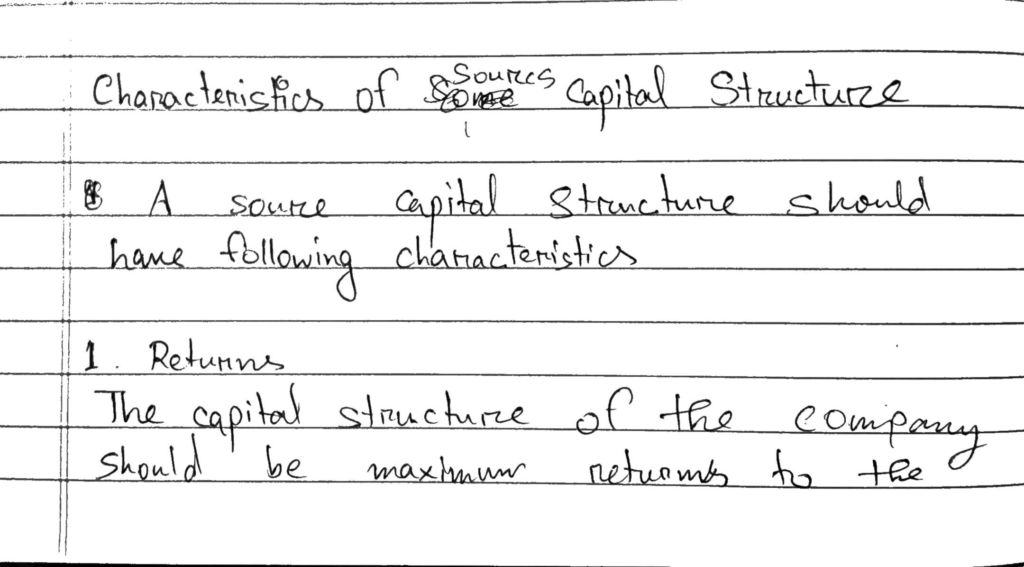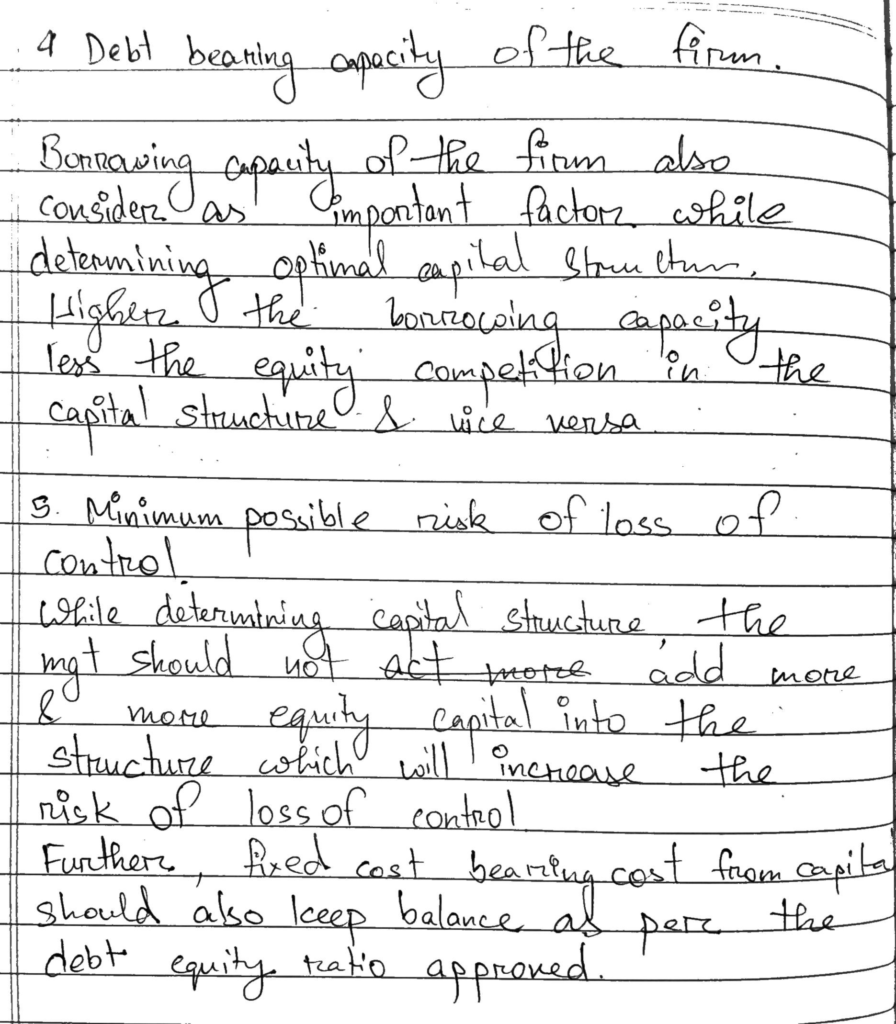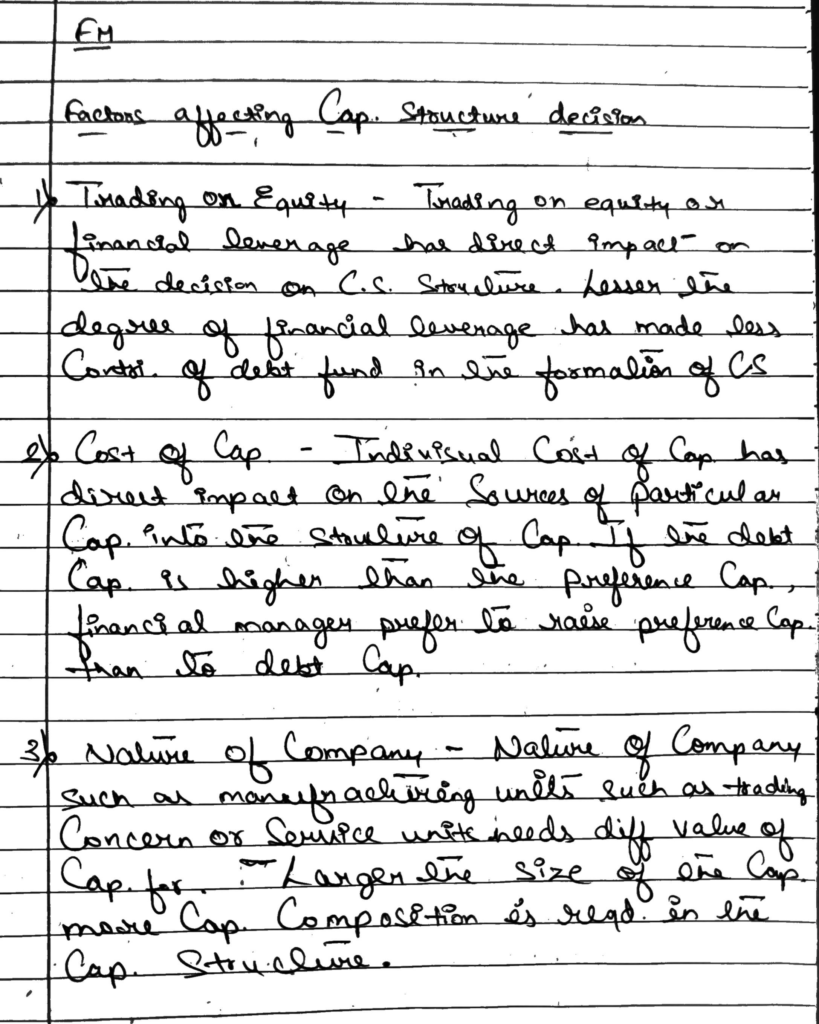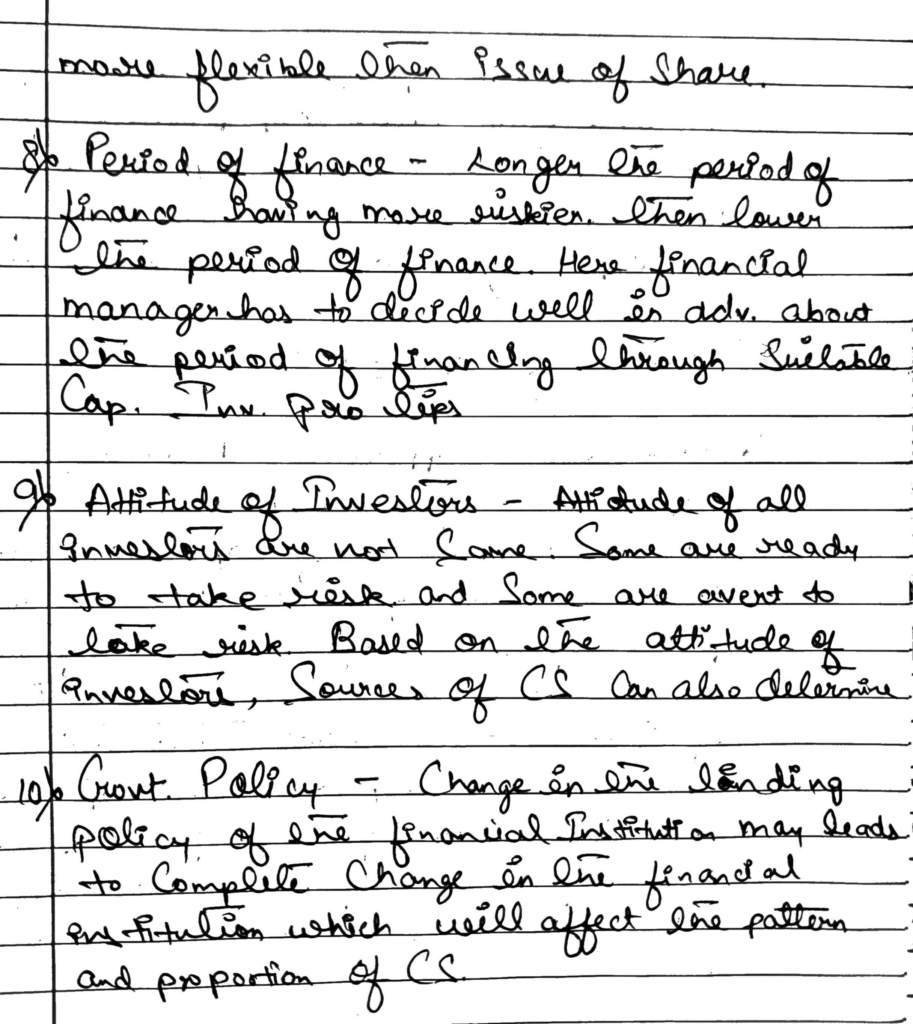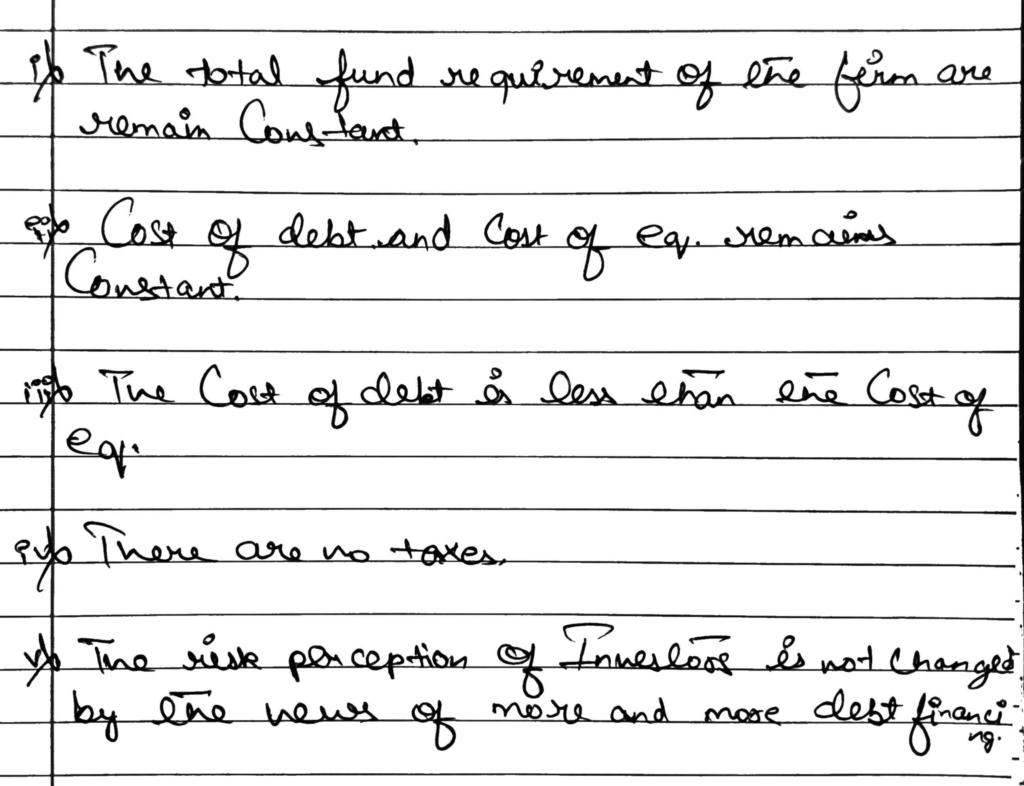Unit 1
What do you mean by financial management?
Financial management refers to the part of the management activity which is concerned with the planning and controlling of firms financial resources. It deals with finding of various sources for raising funds for the farm. The source must be suitable and economical for the need of business. The most appropriate use of such resources forms a part of financial management.
According to J L Massic , ” Financial management is the operational activity of a business that is responsible for obtaining and effectively utilizing the funds necessary for efficient operation.
The three main financial management decisions are:
1. Financing decisions.
The financing decision of a company is taken by the finance manager for the purpose of determining the capital structure of the company. The capital structure of a company includes the proportion of debt and equity, which is used as a source of fund for running the business organization.
Example. Issue of share Debentures
2. Investment decisions.
Investment decision refers to the decisions regarding where to invest so as to earn highest possible return on investment. Investment decisions can be taken for both long term as well as short term.
Example. Investment in a new machine, purchase of a new building are long term investment.
Long term investment decision is also known as capital decision.
3. Dividend decision.
The decision which involved the distribution of profit or surplus of the company is known as dividend decision. Under dividend decision, a company decides what proportion of the surplus to be distributed as dividend and what proportion of the company will keep as retained earnings. It is gained at maximizing the shareholders wealth and encourage them to reinvest in the company.
Objectives of financial management.
1. Profit maximization.
Profit is the main aim of any organization. A business, being an economic institution, must earn profit to cover its cost and provide funds for growth. No business can survive without earning profit. Profit also serve as a protection against various uncertainties of a business.
The following arguments are in favor of profit maximization.
1. When profit earning is the aim of business, then profit maximization should be the main objective.
2. Profitability is an instrument for measuring the efficiency and economic growth of the business.
3. Profits also meets the social needs of the society.
4. A business will be able to survive under unfavorable situation only if it has some past earnings too.
However, profit maximization has been criticized on many grounds. Argument against.
1. A farm pursuing the objective of profit maximization is starts exploiting the workers and consumer.
2. It also leads to number of corrupt practices, unfair trade, fraud or misrepresentation of goods.
3. It also leads to huge inequalities among suppliers, customers, shareholders.
Drawbacks of profit maximization.
1. It ignores the time value of money.
It does not consider the magnitude and timings of earnings. It treats all the earnings as equal though they grew in different.
2. He does not consider the risks of the business.
Two forms may have some expected earnings per share, but if the earning of one is more risky than the market value of its share will be comparatively less.
Explain the wealth maximization as a goal of financial management.
With maximization is one of the modern approaches which involves latest innovations and improvements in the field of the business concern. The term wealth means shareholders wealth or the wealth of the person those who are involved in the business concern.
Wealth maximization is also known as below maximization or net present worth maximization.
Favorable arguments for wealth maximization are.
1. Wealth maximization is superior to profit maximization because the main aim of business concern under this concept is to improve the wealth of the shareholders.
2. With maximization considers both time and risks of the business concern.
3. Wealth maximization provides efficient allocation of resources.
4. When’s maximization Consider the comparison of the value to cost associated with the project to know how much there will be returned in that project.
Argument against wealth maximization.
1. Wealth maximization is nothing. It is the indirect name of profit maximization.
2. Wealth maximization creates ownership management controversy.
3. The ultimate aim of the world maximization objective is to maximize the profit of the firm.
4. Wealth maximization can be activated only with the help of the profitable position of the business concern.
Explain the role and responsibilities of a finance manager.
Finance Manager is an integral part of corporate organization. With his profession, expertise and knowledge he has to play a key role in optimum utilization and management of financial resources of the organization.
1. Forecasting financial requirements.
It is the primary function of the finance manager. He is responsible to estimate the financial department of the business concern. the financial management should estimate how much finances required to acquire fixed asset and verticals the amount needed to meet the working give the The financial management should estimate how much finance required to acquire fixed asset and verticals, the amount needed to meet the working capital requirement in future.
2. Acquiring or raising necessary funds.
The finance manager has to plan for raising the funds from different sources, that is equity preference and the venture so that the amount of funds are made available to the business enterprise to meet its requirements.
3. Investment decisions.
The finance manager must carefully select best investment alternatives and consider the reasonable and stable return from the investment. The finance manager must have a good knowledge of capital budgeting techniques to determine the effective utilization of investment.
4. Cash management.
Cash management play a major role in the area of finance because proper cash management by the finance manager is not only essential for effective utilization of gas, but it also helps to meet the short-term utility position of the concern.
Example. The payment of electricity bills and purchase of raw materials. Payment of wages.
5. Disposal of surpluses.
The net profit decisions have to be made by financial manager.
This can be done in two ways.
1. Declaration of dividend to the shareholders and retaining the profit in the business for reinvestment.
2. To facilitate the cost control.
The finance manager is the first person to recognize when the cost of the supplies or production process are exceeding the expected or budgeted figures. Consequently, the financial manager will identify the deviations and recommend into the top management for controlling the cost.
Explain the nature and scope of financial management.
Financial management refers to the efficient and effective management of an organization’s financial resources to achieve its goals and objectives. It involves planning, organizing, controlling, and monitoring financial resources to maximize profitability, ensure long-term sustainability, and create value for stakeholders.
- Estimating Financial Requirements:
- This involves determining the financial needs of the organization for both short-term and long-term operations. It includes assessing the funds required for day-to-day operations, expansion, capital projects, and other activities. Accurate estimation is crucial to avoid underfunding or overfunding, both of which can lead to financial problems.
- Deciding Capital Structure:
- Capital structure refers to the mix of debt and equity used to finance the organization’s activities. Deciding the appropriate balance between debt (borrowed funds) and equity (owner’s funds) is vital, as it affects the cost of capital, risk, and control of the company. The goal is to find a structure that minimizes the cost of capital while maximizing shareholder value.
- Selecting a Source of Finance:
- Once the financial requirements and capital structure are determined, the next step is to select the sources of finance. These sources can include equity, debt, internal funds, or external borrowings. The selection depends on factors such as cost, availability, repayment terms, and the impact on control and ownership.
- Selecting a Pattern of Investment:
- Financial management also involves making investment decisions that will yield the best returns for the organization. This includes decisions on where to allocate funds—whether in fixed assets, working capital, or new projects. The aim is to ensure that investments generate sufficient returns relative to the associated risks.
- Proper Cash Management:
- Cash management ensures that the organization has enough liquidity to meet its obligations and avoid insolvency. It involves managing cash flows, ensuring timely payments, and maintaining an optimal cash balance. Efficient cash management helps in minimizing idle cash and reducing borrowing costs.
- Implementing Financial Control:
- Financial control involves monitoring and controlling the financial activities of the organization to ensure that financial resources are used efficiently and effectively. This includes setting financial targets, implementing budgets, conducting variance analysis, and using financial ratios to assess performance. Financial control helps in identifying deviations from the plan and taking corrective actions.
- Proper Use of Surpluses:
- When an organization generates a surplus or profit, financial management ensures that these funds are used appropriately. This could involve reinvesting the surplus in the business for growth, paying dividends to shareholders, reducing debt, or setting aside reserves for future needs. The proper use of surpluses helps in strengthening the financial position of the organization.
Write the significance of financial management.
Financial management plays a crucial role in the success and sustainability of any organization. Its significance can be understood through the following key points:
- Useful in Decision Making:
- Financial management provides the necessary financial information and analysis to make informed decisions. Whether it’s deciding on investments, pricing strategies, cost control, or expansion plans, financial management helps managers assess the financial implications of different options and choose the most beneficial path.
- Performance Measurement:
- It enables the organization to track and evaluate its financial performance over time. By analyzing financial statements, ratios, and other metrics, financial management helps in assessing profitability, liquidity, solvency, and overall financial health. This measurement is essential for setting goals and benchmarking against industry standards.
- Coordinate All Other Functional Activities:
- Financial management acts as a unifying force that coordinates various functions within an organization, such as marketing, operations, and human resources. By ensuring that financial resources are allocated efficiently across departments, it helps in aligning all activities towards the common organizational objectives.
- Smooth Running of an Enterprise:
- Effective financial management ensures that the organization has sufficient funds to meet its day-to-day operational needs, such as paying salaries, purchasing raw materials, and managing other expenses. This smoothens the operational flow and prevents disruptions caused by cash shortages or financial mismanagement.
- Growth and Expansion of Business:
- Financial management plays a critical role in planning for and financing growth. It helps in identifying profitable investment opportunities, securing the necessary funds, and managing the risks associated with expansion. Through proper financial planning, businesses can achieve sustainable growth and tap into new markets.
- Proper Management of Funds:
- One of the primary responsibilities of financial management is ensuring that funds are used effectively and efficiently. This involves optimizing the use of working capital, minimizing waste, and ensuring that investments generate adequate returns. Proper fund management helps in reducing unnecessary expenditures and maximizing the value of financial resources.
- Minimization of Cost and Maximization of Profit:
- Financial management focuses on cost control and profit maximization. By analyzing costs, identifying areas for improvement, and implementing cost-saving measures, it helps in reducing operational expenses. At the same time, it seeks to maximize revenue through effective pricing, investment, and financial strategies.
- Financial Control:
- Financial control is essential for monitoring and regulating the organization’s financial activities. Through budgeting, variance analysis, and financial reporting, financial management ensures that the organization’s financial performance is aligned with its goals. It also helps in identifying deviations and taking corrective actions promptly.
Limitations of financial management.
1. Costly process.
The practice of financial management is a type of consuming and expensive activity for financial management.
2. Dependence on historical cost.
Financial management decisions are taken on historical cost and are not forward-looking. The figures of cost can be attributed to future since future earnings depend on many more factors like market conditions, changes in government policy, inflation.
3. Inaccurate data.
Financial management relies on accurate data for decision-making. However, if the data is inaccurate or incomplete, the financial analysis and subsequent decisions may be flawed. Errors in financial statements, incorrect assumptions, or outdated information can lead to misguided strategies and financial mismanagement.
4. Rapid shift in the environment. Inflexibility.
Government law and regulation governing the economic environment might change. Which can have a negative impact on financial management. As the tools of financial management have some principles and assumptions, if it does not have the flexibility to adapt to the changing environment, it may turn as failure to the organization.
Unit 2












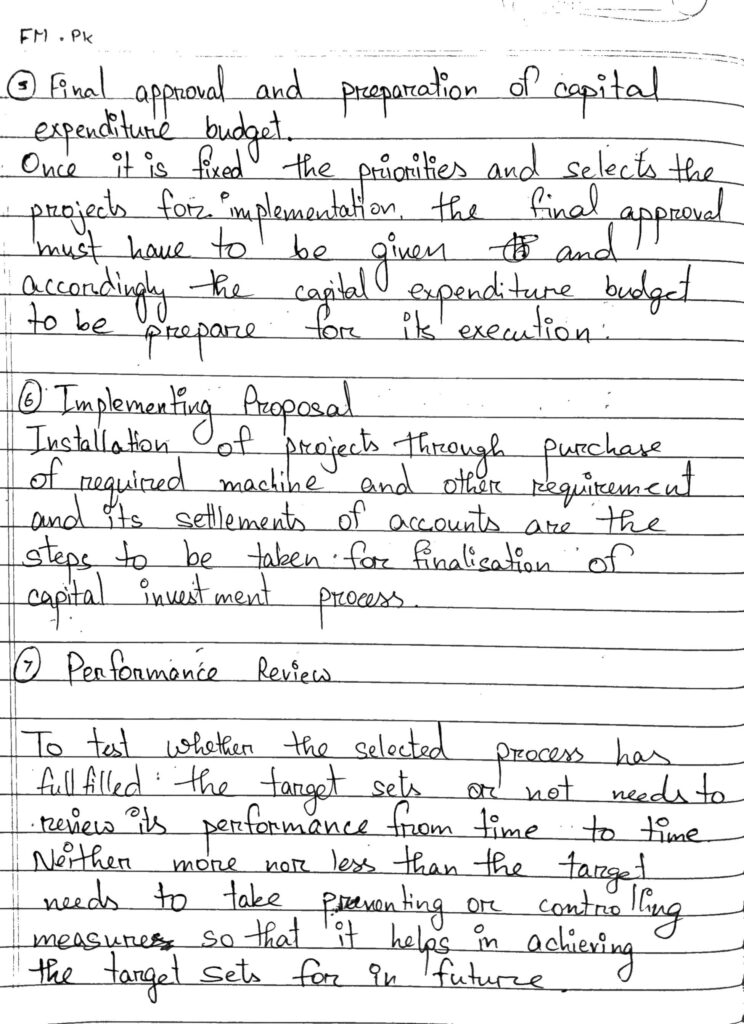






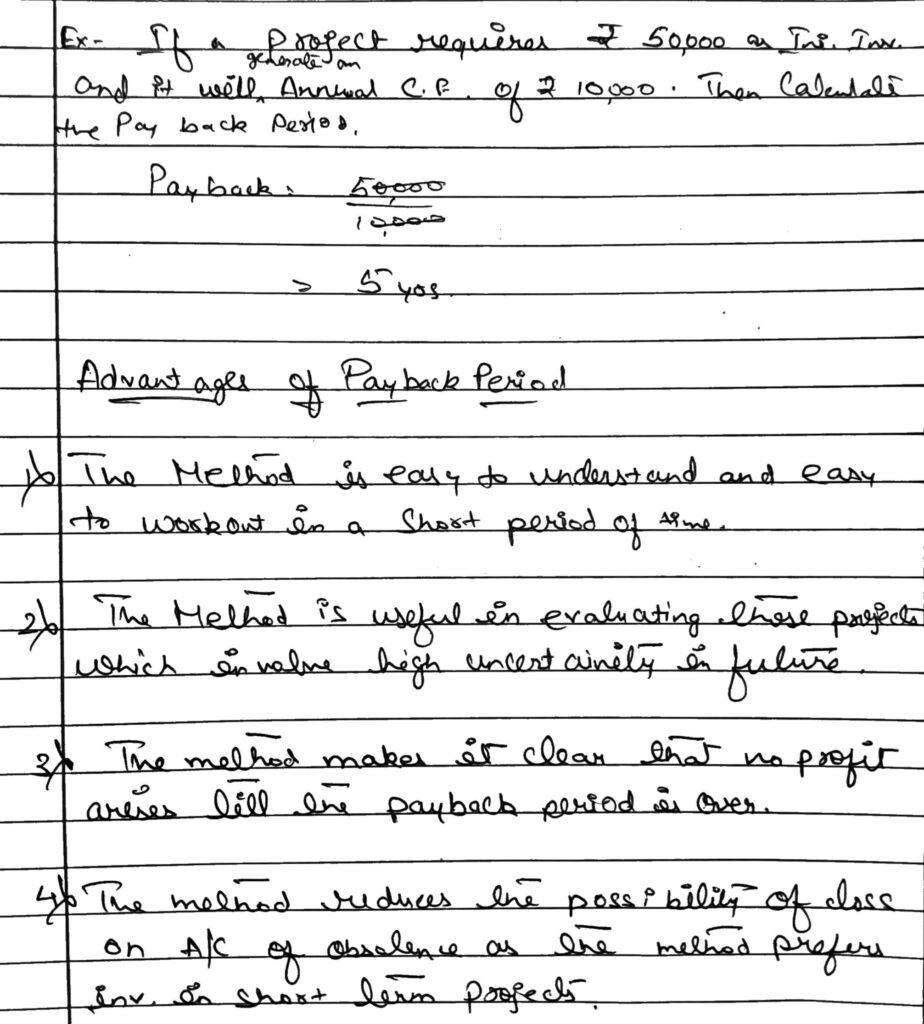



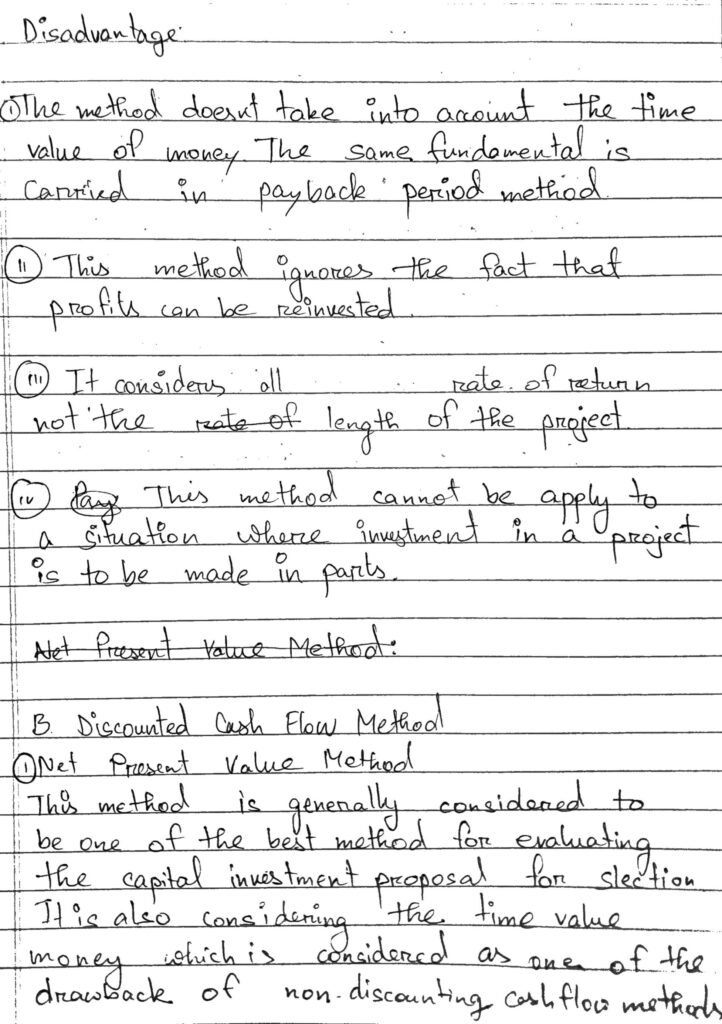








Unit 3

